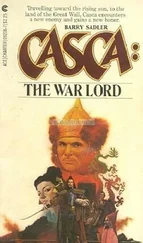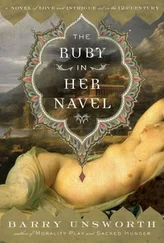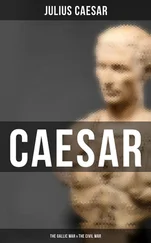wine consumed before battle
wine production
winter in Italy
women
at battles
Celtic
Cimbri
German
plantation officials (vilicae)
as prophetesses
Thracian
Yehohanan
in the so-called ‘Westminster Speech’ before the British Parliament in London, 8 June 1982, http://www.heritage. org/Research/Europe/WM106.cfm.
Florus, Epitome 2.8.12.
Sallust, Histories frg. 3.90.
ferra acuta; see Marcus Junkelmann, ‘Familia Gladiatoria: The Heroes of the Amphitheatre’, in Gladiators and Caesars: The Power of Spectacle in Ancient Rome, Eckart Koehne and Cornelia Ewigleben, eds., English version ed. R. Jackson (Berkeley: University of California Press, 2000), 66.
the ruins of ancient Capua are located in today’s city of Santa Maria Capua Vetere. The modern city called Capua was, in fact, ancient Casilinum.
the stele of Publilius Satyr, published by Theodor Mommsen et al., Corpus Inscriptionum Latinarum, 17 vols. (Berlin: 1863-1986), vol. X.8222. For a photo, see http://www.culturacampania.rai.it/site/engb/Cultural_Heritage/Museums/Scheda/Main_works/works/capua_museo_campano_stele_di_publilius_satyr_.html?UrlScheda=capua_museo_provinciale_campano.
Florus, Epitome 2.8.7.
12.35.
Florus, Epitome 2.8.8.
Sosipater Charisius 1.133 (ed. Keil).
Livy, History of Rome 42.59.
Strabo, Geography 4.4.2. trans. Philip Freeman, War, Women, and Druids. Eyewitness Reports and Early Accounts of the Ancient Celts (Austin: University of Texas Press, 2002), 12-13.
Diodorus Siculus 5.26.3-4.
A. Tchernia, ‘Italian Wine in Gaul at the End of the Republic’, in Peter Garnsey, Keith Hopkins and C.R. Whitaker, eds., Trade in the Ancient Economy (Berkeley: University of California Press, 1983) 92, 97-8.
Cassius Dio frg. 101.
Tacitus, Germania 14.
Dio Cassius 77.10.2.
all these examples come from the earlier ludus in Pompeii and appear in Luciana Jacobelli, Gladiators at Pompeii (Los Angeles: John Paul Getty Museum, 2004), 48-9, 65-6.
Seneca, Letters 37.2.
Appian, Civil Wars 1.116.539.
Plutarch, Crassus 8.3. For the translation of the Greek word prâotês as ‘dignified’, see Hubert Martin, Jr, ‘The Concept of Prâotês in Plutarch’s Lives’, Greek, Roman and Byzantine Studies 3 (1960): 65-73.
Sallust, Histories frg. 98A.
Sallust, Histories frg. 98A.
Plutarch, Crassus 8.4.
the Kapreilios Relief shows two women and two children accompanying a file of eight slaves marching in a chain gang, chained by the neck and preceded by a guard. See J. Kolendo, ‘Comment Spartacus devint-il esclave?’, in Chr. M. Danov and Al. Fol, eds., SPARTACUS Symposium Rebus Spartaci Gestis Dedicatum 2050 A.: Blagoevgrad, 20-24.IX.1977 (Sofia, Bulgaria: Editions de L’ Académie Bulgare des Sciences, 1981), 75, and M.I. Finley, ‘Marcus Aulus Timotheus, Slave Trader’, in Aspects of Antiquity, Discoveries and Controversies, 2nd edn (New York: Penguin, 1977), 154-66.
Plutarch, Crassus 8.3.
personal communications, Professor Harry Greene, Cornell University, and Professor Luca Luiselli, University of Rome.
Plutarch, Crassus 8.4.
Plutarch, Crassus 8.4, mss. a, b, c.
Plutarch, Crassus 8.4, mss. d, e, f.
Tacitus, Germania 8.
Phyllis Mack, Visionary Women: Ecstatic Prophecy in Seventeenth-Century England (Berkeley: University of California Press, 1992), 17.
On Agriculture 1.8.6.
Plutarch, Life of Marius 17.1-3.
Demosthenes 18.259-60; Alexander Fol and Ivan Mazarov, Thrace and the Thracians (New York: St Martin’s Press, 1997), 28-9.
Diodorus Siculus 34.2.46, 36.4.4, with Jean Christian Dumont, Servus. Rome et l’Esclavage sous la République, Collection de l’École Française de Rome 103 (Rome: Ecole Française de Rome, Palais Farnèse, 1987), 263-4.
E. Candiloro, ‘Politica e cultura in Atene da Pidna alia guerra mitridatica’, Studi classici et orientali 14 (1965): 153-4 and n.71.
Claudian, Gothica 155-6.
Emilio Gabba, Appiani, Bellorum Civilium Liber Primus (Firenze: La Nuova Italia Editrice, 1958), 317. cf. 211-12.
Archiv für Kriminologie 211, 5-6 (May-June 2003): 174-80. http://www.ncbi.nlm.nih.gov/sites/entrez?db=pubmed&cmd=Retrieve&dopt=AbstractPlus&list_uids=12872687.
in one of his poems (Carmina 9.253), the late Roman man of letters, Sidonius Apollinaris (c. AD 430-489) describes Spartacus as wielding a sica in battle against Rome’s consuls.
Florus, Epitome 2.8.3.
Plutarch, Crassus 9.1.
Appian, Civil Wars 1.116.540.
Florus, Epitome 2.8.3.
Varro, Agriculture 1.17.2.
Cato, On Agriculture 144.3.
Suetonius, Vespasian 23.
Appian, Mithridatic Wars 109.519-520.
Horace, Odes 3.14.14-20. Trans. http://www.perseus.tufts.edu/cgi-bin/ptext?lookup=Hor.+Carm.+3.14.
Livy, History of Rome 3.16.3.
Sallust, Histories frg. 3.93.
Caesar, The Gallic War 1.40.6.
Plutarch, Sulla 18.5.
Aulus Gellius, Attic Nights 5.6.20, trans. Brent D. Shaw, Spartacus and the Slave Wars (Boston: Bedford/St Martin’s, 2001), 164.
Homer, Iliad 14.227.
Peloponnesian War 2.96.2.
Sallust, Histories frg. 3.102.
Appian, Civil Wars 1.116.541.
Tacitus, Germania 3.2.
at Ribemont-sur-Ancre; Jean-Louis Brunaux and Bernard Lambot, Guerre et Armament chez les gaulois 450- 52 av. J.-C. (Paris: Editions Errance, 1987), 84.
Plutarch, Crassus 9.4.
Sallust, Histories frg. 3.96A.
Sallust, Histories frg. 3.96.
Florus, Epitome 2.5.
Читать дальше












